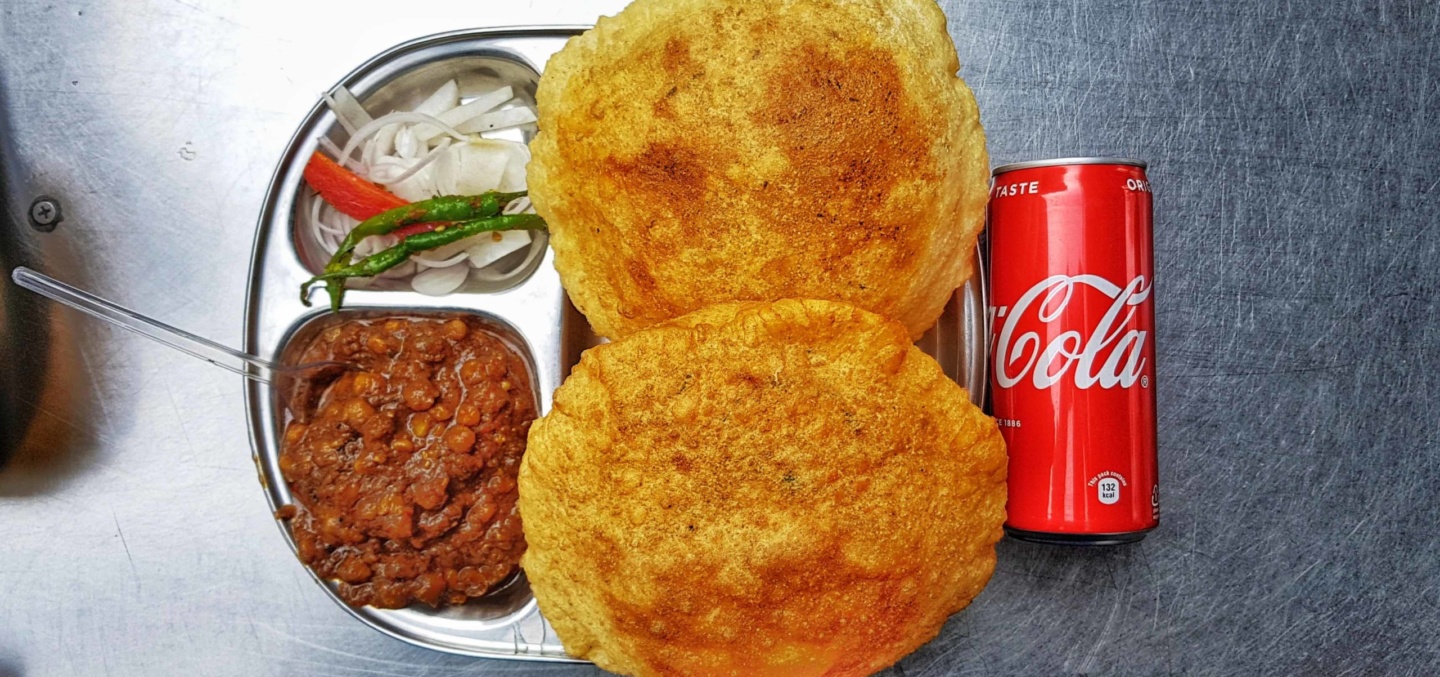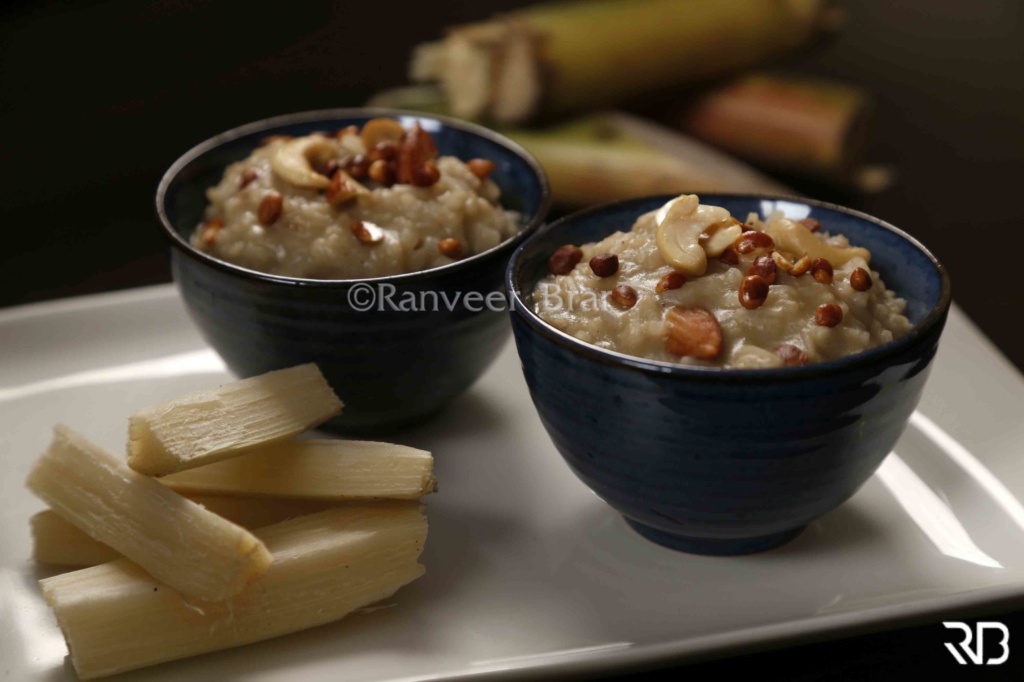
5 authentic Punjabi dishes to put you into a food coma
‘Tis the season to Baisakhi — so try everything from kadhi to meethe chawal
Succulent, creamy, makhani chicken, fragrant Hyderabadi biryani, softer-than-air gursandesh that melts in your mouth faster than you can say yum — if you thought cricket, creeping on our neighbours and celebrity gossip were the only things that unanimously united Indians, think again.
The pride we take in our country’s food is unparalleled. And our repository of regional delicacies is endless.
Thepla is a more dependable companion than neck pillows on travels, rajma-chawal is the culinary rite of passage for most Indian students studying abroad, and we’re always semi-leaning on sheera for comfort. Heck, even our favourite foreign jijaji Nick Jonas, has recently pledged his love for paneer.
And with Baisakhi, the spring harvest festival around the corner (April 13, 2020), we’ve put together recipes for five traditional Punjabi dishes you can make at home (it also marks the Sikh new year and commemorates the formation of the Khalsa panth of warriors under Guru Gobind Singh in 1699).
While food blogger and writer Vernika Awal, founder of Delectable Reveries shares her recipes for savoury favourites like Punjabi kadhi and Pindi chole, celebrity chef extraordinaire Ranveer Brar shares three gur-tinged recipes to help you celebrate the festival ‘sweetly’.
It’s going to be a gur day.
5 Punjabi dishes you can make at home to celebrate Baisakhi
I have more butter chicken than blood running through my veins, and I love sarson ka saag as much as any other healthy Punjabi girl — but saag is mostly a winter dish, and while butter chicken is eternal, we’d like to save something for next time.
According to Awal, “Baisakhi doesn’t really have a specific dish. Mostly it is light food, as it marks the transition from spring to summer. So we’re looking at more cooling food — kadhi (yoghurt-based), lassi, meethe chawal, kheer etc.”
Pindi chole (chickpeas)
The ‘pind’ in Awal’s recipe refers to Rawalpindi — and this dish is a speciality of the region. This comfort dish can be paired with bhature, kulche, parathas and even good old bread.
It’s crowd-pleasing, eternally satisfying and dependable — basically the Paul Rudd of Punjabi food.
Ingredients:
- ½ kg chole (chickpeas), soaked overnight
- 8 tsp freshly powdered coriander seeds
- 2 tsp freshly roasted jeera powder
- 8 tsp anardana
- 1 tbsp roasted kasuri methi
- 1 tsp amchur
- 1 tbsp garam masala
- Salt to taste
- 5 tbsp oil
Directions:
- In a pan, add the boiled chole, and then add all dry masalas into the boiled chole.
- Heat oil in a separate pan and then pour it over the chole. Mix well. Your dish is ready to be served.
Photo and recipe: Vernika Awal
Punjabi kadhi
Fried pakoras drenched in a savoury, slight sour besan-rich gravy either sounds like your nightmare or a dream come true. One of the most popular, yet divisive traditional Punjabi dishes, this, much like sushi, requires you to develop a taste for it.
Once you do, however, you’re going to wish you had watched Honey masi make those pakodas more closely — cause yours just seem to come apart. Best paired with rice, or roti, if you’re experimental.
Ingredients
For kadhi:
- 1 ltr mattha/chaas
- 3 tbsp besan (chickpea flour)
- 1 cup water
- 1 inch ginger
- 5-6 pods garlic
- 1 green chilli
For tadka:
- 1 chopped onion
- 5-6 chopped garlic pods
- 1 tsp methi dana
- 1 tsp mustard seeds
- 1 tsp jeera
- 1 tsp red chillies whole
- 1 tsp turmeric
- 1 tsp red chilli powder
- 4 tbsp mustard oil
- Pinch of asafoetida
- Salt to taste
For pakoda:
- 4 tbsp besan
- tsp turmeric
- 1 tsp chilli powder
- 1 finely chopped onion
- 2-3 tbsp water
- Salt to taste
- Mustard oil to fry
Directions:
For pakoda:
- In a bowl, add besan, salt, turmeric, red chilli powder, salt and chopped onion and mix these dry ingredients well.
- Add water to this mixture and whisk it till the lumps from the liquid go away and there is a medium thick consistency.
- In a pan, add mustard oil and bring it to heating point.
- Now, add 1tbsp mixture of the pakoda and fry them till golden brown.
Keep this aside
For kadhi:
- In a deep dish, mix the mattha, water and besan till the besan lumps vanish.
- Separately make a ginger, garlic and green chillies paste, and add it to the mattha-besan mix.
- Cook this for minimum two-three hours till it achieves a slightly thick consistency.
For tadka:
- In a pan, add mustard oil and bring it to heating point.
- To this add the jeera, methi dana and let them crackle.
- Add finely chopped garlic, followed by onion and cook till golden brown.
- Add the dry red chillies.
- Later, add turmeric, red chilli powder and asafoetida.
- Once cooked, add this tadka to the kadhi and mix.
Photo and recipe: Vernika Awal
Cane sugar brown rice kheer
Baisakhi without some form of kheer is like an Indian household that has absolutely no haldi in the masala dabba — it’s kind of impossible. Chef Brar’s Cane sugar brown rice kheer is made using easy-to-find ingredients, but will ensure your guests (or you) will be coming back for seconds and thirds.

Ingredients:
- 1 ltr fresh cane sugar juice
- 1 tbsp ghee
- 1 cup brown rice, soaked
- ½ tsp cardamom powder
- A pinch of cinnamon powder
- ½ cup milk
- ¼ cup mixed dry fruits (almonds, cashew nuts etc)
Directions:
- Heat ghee in a deep non-stick pan and sauté all dry fruits until light brown. Remove the roasted nuts and keep aside.
- Add brown rice to the same ghee and sauté for a minute. Now add cane sugar juice and bring it to a boil. Let it simmer until rice is cooked.
- Sprinkle cinnamon and cardamom powder, add milk and cook for another five minutes. Remove from the flame and transfer to a serving bowl.
Garnish with the roasted nuts and serve hot.
Photo and recipe: Ranveer Brar

Gur paratha
Made using jaggery and usually served during winter and Indian harvest festivals, gur paratha is the North Indian cousin of Maharashtra’s puran poli. This sweet-savoury combo is gur for you.
Ingredients:
For the dough:
- 1½ cup whole wheat flour
- ½ cup refined flour
- A pinch of salt
- 1 tbsp ghee for roasting
- 1 cup warm water (or as required)
For the stuffing:
- ¾ cup jaggery powder/finely chopped jaggery
- ¼ tsp cardamom powder
- 1 tbsp ghee
- 15-20 crushed almonds
- ¼ cup desiccated coconut
Directions:
- To prepare the dough, add whole wheat flour, refined flour and salt to a bowl and mix well.
- Add ghee and mix in with finger tips, pour warm water little by little as required to knead a soft dough. Cover and rest the prepared dough for 20 minutes.
- Meanwhile, prepare the stuffing, mix the crushed almonds/desiccated coconut with the jaggery powder along with cardamom powder. Add ghee to this mixture, mix well and set aside.
- Divide the prepared dough into equal portions. Roll each into a thick disc, place a tbsp full of jaggery mix in the centre and make a potli.
- Flatten the paratha slightly with fingers to spread the mixture inside the sealed paratha.
- Dust the stuffed paratha with whole wheat flour and roll into a thick disc with a light hand. Repeat the process for all the parathas. (Note: Make sure you don’t roll with too much pressure, we don’t want the paratha to tear.)
- Heat a tawa, brush it with a little ghee and place the prepared paratha on it.
- Roast the paratha for a few seconds, flip over and brush ghee on it. Flip again, brush ghee on the other side and roast till light brown spots begin to appear on both sides. (Note: Do not press the paratha too much while cooking to avoid it from breaking.)
Serve hot.
Photo and recipe: Ranveer Brar

Gur ke chawal
This traditional Punjabi dish makes an appearance on most auspicious occasions — from weddings, harvest festivals, childbirth to a Saturday afternoon where you’re just happy to be not working.
Ingredients:
- 1 cup long grain basmati rice, soaked
- 1 tbsp ghee
- 3-4 cloves
- 2-3 green cardamoms, slightly crushed
- 1 tsp fennel seeds
- ¼ cup dry coconut, sliced
- ¼ cup raisins
- ¼ cup almonds, chopped
- ¼ cup cashew nuts, halved
- A pinch of saffron
- ¾ cup jaggery, grated
Directions:
- Heat ghee in a non-stick pot and add cloves, cardamom pods, fennel seeds and stir fry for 30 seconds until it releases its flavours.
- Now add in the sliced coconut and raisins, almonds, cashew nuts and cook for another minute on medium flame.
- Now drain the soaked rice, rinse well, and add it to the pot and sauté for two-three minutes.
- Add a cup of warm water and saffron. Cook till three forth done.
- Now in another pan, add jaggery and melt it by adding one cup of water. Allow it to melt completely and add it to the rice. Do not stir, cover with a lid and cook for another five-six minutes on very low flame.
- Once cooked, remove and serve hot immediately.
Photo and recipe: Ranveer Brar
Bonus: Mango lassi to wash down all that food
Lassi is more quintessentially Punjabi than Kirron Kher in all Karan Johar movies. It gets an upgrade on Baisakhi, in the form of dry fruits and mango. It is a special occasion after all, even your lassi wants to be dressed up.
Ingredients:
- 2 cups yoghurt
- 2 cups ripe mango, peeled and cubed
- 2 tsp sugar
- 1/2 tsp cardamom powder
- 5-6 ice cubes
- 1 cup milk
Directions:
- Add yoghurt, mango piece, sugar, cardamom powder and ice cubes in the jar of a blender.
- Add milk. Blend until smooth.
- Add some more milk if the lassi is too thick. Pour the lassi in serving glasses.
- Garnish with saffron strands, almond and pistachio slivers and mint leaves. Serve chilled.
Recipe and photo: WhiskAffair/Instagram

